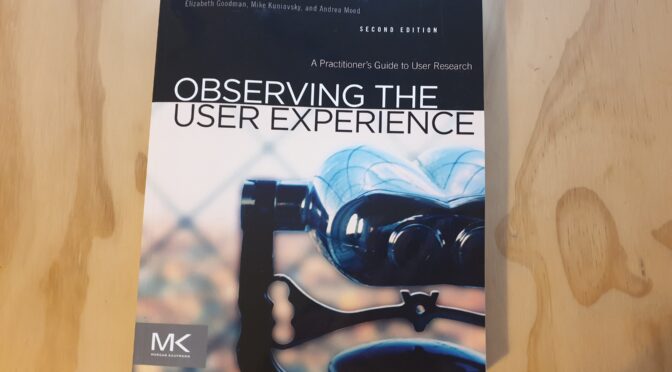It was 2010, and I was just starting my PhD at Loughborough University in the UK. In the Design School, there was a small library – just two or three bookshelves – that held the titles relevant to the research groups sharing that area. We could always find something there to serve as a practical guide for conducting our studies. In my case, that meant researching user experience.
From time to time, the library was updated with new titles. These were usually purchased by the school, either on supervisors’ suggestions or at the request of PhD students. So we had quick access to the latest trends in design research.
One day, I picked up one of the new arrivals, more or less at random, and started reading. My colleague, who sat at the desk next to mine, looked over and said, “Oh, so the Kuniavsky book has arrived!” I replied something like, “Yes – was it you who requested it?” Until then I didn’t really know what it was about, but after reading a few pages, I understood her excitement. As the cover says, it’s a practical guide to user research, and I found it impressively comprehensive.
Content
This book contains the basic tools for all professionals who create digital products and services – not just experience designers. It provides the methods to understand who your users are, what they want, and what they need. From there, you can start developing ways to deliver those solutions to them.
A new edition of the book was released in 2012. Even though it’s now a decade old, it still offers valuable insights into how to apply the most widely used design research strategies. It covers the essentials – how to recruit, ask, and observe – but also explores more modern and innovative techniques. Across its 585 pages, there are entire chapters dedicated to each method, including:
- Interviews
- Focus groups
- Object-based techniques (photos, collages, card sorting, Lego®, etc.)
- Field visits
- Diaries
- Usability testing
- Questionnaires
- Secondary data (usage statistics, published studies, consumer comments, etc.)
The final part of the book focuses on communicating research results. The authors describe how to present deliverables such as personas, scenarios, maps, process flows, and models. They also show how to communicate user experience findings to others.
After my postdoctoral work and research contracts at Loughborough and Warwick, I left the university, which meant losing access to the library – and to that book. So I had to buy my own copy, and I still revisit it periodically in my professional practice as a UX Researcher.
If I had to recommend just one book to anyone wanting to conduct research to understand their audience, this would be it.
Reference
Kuniavsky, M., Goodman, E., & Moed, A. (2012). Observing the User Experience: A Practitioner’s Guide to User Research. 2nd ed. Morgan Kaufmann.
